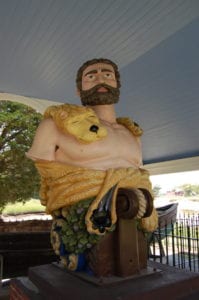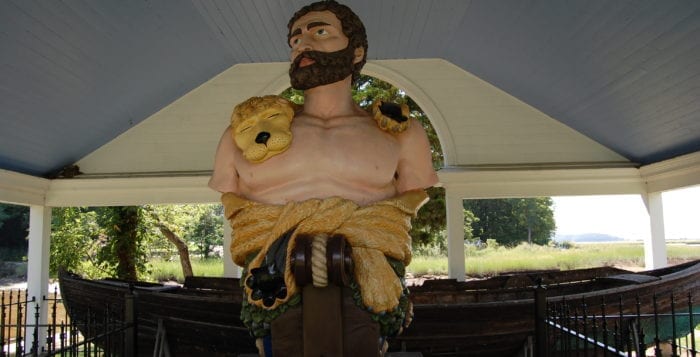Local fun fact
By Ernestine Franco
The heroes of Greek and Roman legends are long gone, but they are still an echo in our collective mythic memories.
Hercules was the Roman name of the greatest hero of Greek mythology — Heracles. Like most authentic heroes, Hercules had a god as one of his parents, being the son of the supreme deity Zeus and the mortal Alcmene. Zeus’ queen Hera was jealous of Hercules and was determined to make trouble for him by making him lose his mind. In a confused and angry state, he killed his own wife and children.
The story goes that when he awoke from his “temporary insanity,” Hercules was shocked and upset by what he’d done. He prayed to the god Apollo, also a son of Zeus. As part of his punishment, Hercules had to perform 12 labors including slaying the Nemean lion — feats so difficult that they seemed impossible. Fortunately, Hercules had the help of some sympathetic deities. By the end of these labors, Hercules was, without a doubt, Greece’s greatest hero. His struggles made him the perfect embodiment of an idea the Greeks called pathos, the experience of virtuous struggle and suffering that would lead to fame and, in Hercules’ case, immortality.
His struggles made him the perfect embodiment of an idea the Greeks called pathos, the experience of virtuous struggle and suffering that would lead to fame and, in Hercules’ case, immortality.
There have been many reincarnations of Hercules. To name just a few: Agatha Christie’s detective Hercule Poirot; the 1997 animated Disney movie “Hercules”; the TV show “Hercules,” which ran from 1995 to 1999; and a 1970 B film “Hercules in New York.” There is even an adjective, herculean, that embodies all the positive aspects of this hero.
But before all these, there was the 19th-century figurehead Hercules of the USS Ohio. Built between 1817 and 1820, she was the first ship built at the Brooklyn Navy Yard. The Ohio served in the Mediterranean, sailed the Pacific and landed troops on the shores of Vera Cruz during the war with Mexico in 1847. By 1884 the Ohio was decommissioned, sold for scrap and moored in Greenport. She broke free of her mooring during a storm and sunk a short distance off shore. Resting in a mere 20 feet of water, part of the ship was above sea level. The exposed parts of the Ohio were burned and the rest abandoned. Luckily this piece of folk art was stripped off the ship before her end.
The figurehead of Hercules, wrapped in the skin of the Nemean lion, was carved out of a single piece of cedar at a cost $1,500. At one point it was sold for a mere $10 at an auction. It was again sold for $15 by the then owner of the Canoe Place Inn in Hampton Bays where it remained for decades. Eventually the figurehead was acquired by Ward Melville in 1954 who deeded it to The Ward Melville Heritage Organization for preservation.
As if this isn’t already an amazing enough piece of history, the pavilion also has a whaleboat used on Charles Hall’s final arctic expedition. The Hercules Pavilion is located along Main Street in Stony Brook Village, across from the Village Green, near the anchor of the USS Ohio.
For more information, call 631-751-2244 or visit www.wmho.org.







